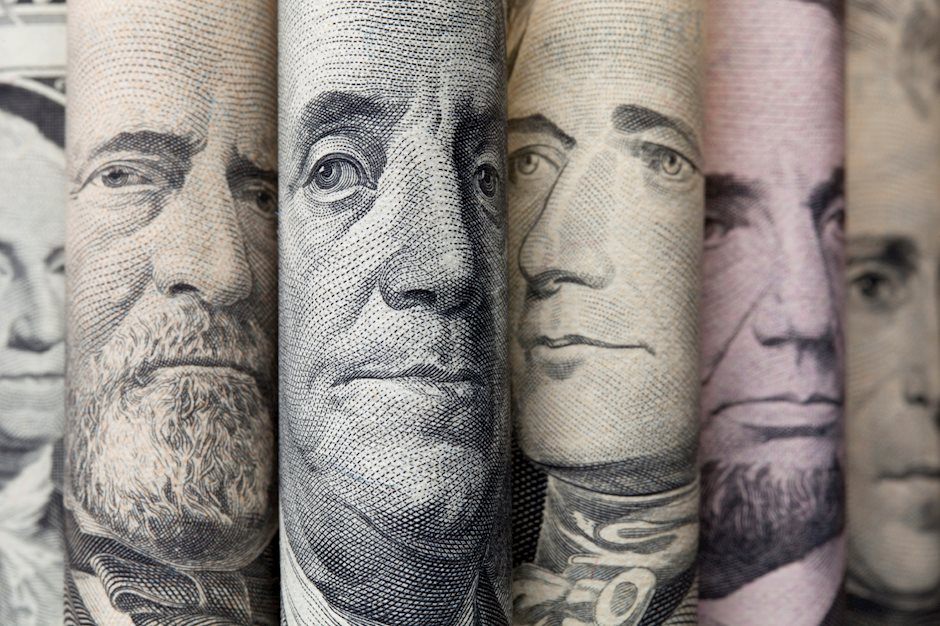US Dollar advances after mid-tier data
- The DXY gained toward 106.70 on Thursday.
- US Dollar Index rises after Christine Lagarde confirmed the ECB’s dovish stance.
- PPI figures from the US came in hot, benefiting the USD.

The US Dollar Index (DXY), which measures the value of the USD against a basket of currencies, rose toward 106.70 after Christine Lagarde, President of the European Central Bank (ECB), confirmed talks of a possible 50 bps interest rate cut. Lagarde’s comments followed the ECB cutting its benchmark rate by 25 bps, the fourth time it has lowered rates this year.
Traders favored the Greenback over the Euro following the ECB rate decision, causing the DXY to surge above 106.50.
In addition, US Producer Price Index (PPI) data showed inflation jetting above expectations, which may slow the Federal Reserve’s (Fed) turn toward loose monetary policy next year.
Daily digest market movers: ECB cut and higher US inflation push US Dollar higher
- The PPI increased by 3% YoY in November, surpassing market expectations of a 2.6% gain.
- The core PPI, excluding food and energy, climbed by 3.4% YoY, exceeding analysts' forecast of 3.2%.
- On a monthly basis, headline PPI rose by 0.4% while consensus was 0.2%.
- Initial Jobless Claims surged to 242,000 in the week ending December 7th, surpassing estimates of 220,000.
- Despite the hot producer inflation data, markets weighed the surge in joblessness and still priced in a 25 bps cut for next week’s Fed decision.
DXY technical outlook: Reclaiming 20-day moving average indicates resilience
The US Dollar Index has halted its recent decline and regained some of its lost ground on Thursday. The DXY index has managed to stay above the 106.00 level despite mixed sentiment data and speculation about the Fed slowing down its rate hiking cycle.
The Relative Strength Index (RSI) and Moving Average Convergence Divergence (MACD) indicators also suggest that the index is resilient and could continue to move higher.
The DXY faces resistance at 106.50 -107.00. If it recovers this area, it might retest the 108.00 area.
Fed FAQs
Monetary policy in the US is shaped by the Federal Reserve (Fed). The Fed has two mandates: to achieve price stability and foster full employment. Its primary tool to achieve these goals is by adjusting interest rates. When prices are rising too quickly and inflation is above the Fed’s 2% target, it raises interest rates, increasing borrowing costs throughout the economy. This results in a stronger US Dollar (USD) as it makes the US a more attractive place for international investors to park their money. When inflation falls below 2% or the Unemployment Rate is too high, the Fed may lower interest rates to encourage borrowing, which weighs on the Greenback.
The Federal Reserve (Fed) holds eight policy meetings a year, where the Federal Open Market Committee (FOMC) assesses economic conditions and makes monetary policy decisions. The FOMC is attended by twelve Fed officials – the seven members of the Board of Governors, the president of the Federal Reserve Bank of New York, and four of the remaining eleven regional Reserve Bank presidents, who serve one-year terms on a rotating basis.
In extreme situations, the Federal Reserve may resort to a policy named Quantitative Easing (QE). QE is the process by which the Fed substantially increases the flow of credit in a stuck financial system. It is a non-standard policy measure used during crises or when inflation is extremely low. It was the Fed’s weapon of choice during the Great Financial Crisis in 2008. It involves the Fed printing more Dollars and using them to buy high grade bonds from financial institutions. QE usually weakens the US Dollar.
Quantitative tightening (QT) is the reverse process of QE, whereby the Federal Reserve stops buying bonds from financial institutions and does not reinvest the principal from the bonds it holds maturing, to purchase new bonds. It is usually positive for the value of the US Dollar.
Author

Patricio Martín
FXStreet
Patricio is an economist from Argentina passionate about global finance and understanding the daily movements of the markets.

















